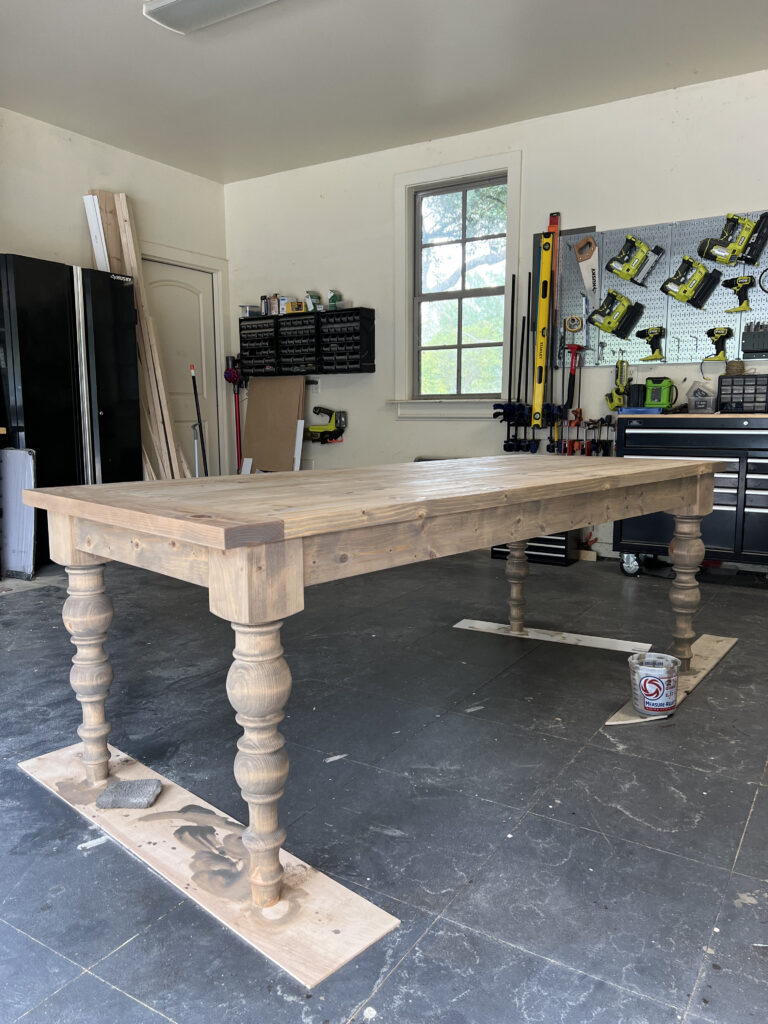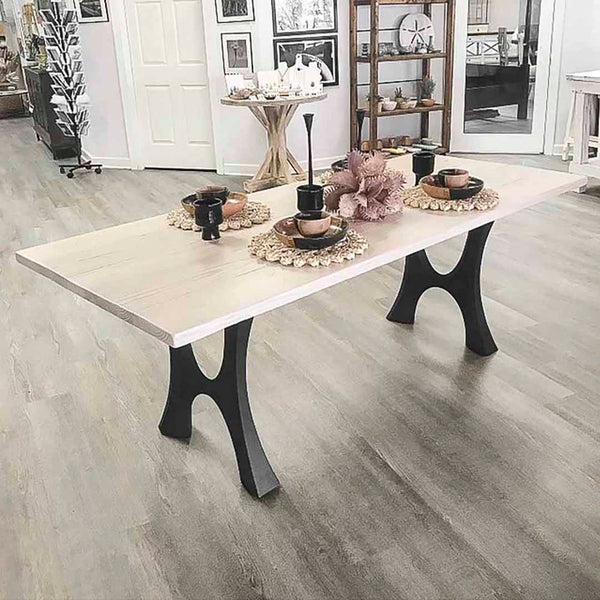Durable and Elegant Choices for Durable Dining Table Legs Wood Solutions
Durable and Elegant Choices for Durable Dining Table Legs Wood Solutions
Blog Article
Secret Variables to Remember for Table Legs Wood Choices
When picking timber for eating table legs, a number of critical elements require mindful consideration to make certain both functionality and aesthetic charm. The selection of wood kind, characterized by its resilience and unique grain patterns, plays a crucial duty in the general design and durability of the piece.
Wood Types and Characteristics
When selecting timber for dining table legs, it is necessary to understand the special features of different timber types. Different timbers provide distinctive advantages and disadvantages, influencing both the longevity and aesthetic allure of the completed item.
Hardwoods, such as maple, oak, and cherry, are frequently liked for their toughness and resistance to put on. Oak, recognized for its remarkable toughness, also features a noticeable grain that can include personality to the table. Maple uses a smooth surface area and is much less prone to warping, making it a dependable choice for useful furniture. Cherry wood, with its abundant shade that grows in time, offers a lavish look however may need even more maintenance to protect against scrapes.
On the various other hand, softwoods like pine and fir are more economical and easier to deal with, yet they are less sturdy than hardwoods. Pine is light-weight and features a warm, rustic appearance, making it a popular selection for casual eating setups. It is much more at risk to damages and scrapes.
Comprehending these features will certainly assist in making an educated decision to make certain the legs of the table fulfill both practical and visual needs.
Grain Patterns and Aesthetics
Picking the right grain pattern can substantially boost the aesthetic charm of dining table legs. The wood's grain is not simply an aesthetic feature; it conveys a special individuality and beauty to each item. Various timber species display unique grain patterns, varying from the straight lines of maple to the elaborate swirls of oak and the striking number of walnut. These patterns can stimulate different styles, from rustic to contemporary, making it important to select a grain that aligns with the total style of the dining area.
Furthermore, the positioning and range of the grain can affect the regarded dimension and sophistication of the table. For example, larger, extra pronounced grains might offer a vibrant, remarkable impact, while finer, subtler grains can create an improved, understated look. Additionally, the ending up process can additionally improve these patterns, emphasizing the all-natural beauty of the timber and highlighting abundant shades.
Eventually, the option of grain pattern ought to integrate with other style aspects, such as the table top and surrounding furniture, making sure a natural visual that boosts the eating experience. Thoughtful selection of wood grain not just adds to the table's elegance but likewise reflects the proprietor's preference and design.
Longevity and Strength
The longevity and toughness of eating table legs are vital factors to consider for making sure long life and security in any dining area. Choosing the appropriate timber is important, as various species display varying degrees of resilience.

Eventually, purchasing premium timber and durable construction methods will generate a table that stands the test of time, while supplying a dependable foundation for plenty of dishes shared amongst household and close friends. Prioritizing toughness and strength makes certain that your eating table remains useful and visually pleasing for many years to come.
Upkeep and Care
Appropriate upkeep and treatment are crucial for preserving the durability and stamina of table legs made from wood. Regular cleansing is essential; using a soft, wet towel makes sure that dust and particles do not build up, which can result in scratches and dullness. It is recommended to prevent extreme chemicals or rough materials that might harm the surface.
In addition, using an ideal timber gloss or wax regularly visit this web-site can assist preserve the sheen and shield the timber from dampness and spills. Nevertheless, it is crucial to comply with the producer's recommendations pertaining to the type of product to make use of, as certain coatings might react detrimentally to specific chemicals.
Moisture and temperature level variations can additionally influence wooden table legs, causing them to warp or fracture. It's ideal to position the table away from direct sunlight and warmth sources. If the table legs have any kind of scrapes or dents, resolving these without delay can prevent additional damages.
Lastly, regularly evaluating the joints and screws for rigidity is necessary to preserve architectural integrity (Dining Table Legs Wood). By adhering to these upkeep techniques, house owners can ensure their wood dining table legs continue to be appealing and useful for several years ahead
Ecological Considerations
When choosing timber for eating table legs, it's important to take environmental factors to consider right into account. The sourcing and sustainability of wood are critical in reducing environmental effect. Going with timber from licensed sources, such as those recommended by the Forest Stewardship Council (FSC), ensures that the lumber is collected properly, promoting woodland conservation and biodiversity.

Moreover, neighborhood sourcing of wood reduces transportation discharges, supporting local economic climates while reducing environmental influence. It is likewise advisable to be conscious of the wood's treatment and ending up procedures, as specific chemicals can be damaging to both human health and the setting. By prioritizing sustainable timber selections, consumers can add to environmental conservation while appreciating the resilience and charm of their table legs.
Verdict
Finally, choosing timber for dining table legs necessitates mindful consideration of different factors, including timber kinds, grain patterns, and toughness. The aesthetic allure of special grain patterns can enhance the total layout, while the stamina of woods makes sure durability. Upkeep requirements and environmental sustainability more impact timber selections, emphasizing the value of sourcing from accredited or reclaimed products. An informed selection procedure eventually adds to a practical and visually enticing eating space that straightens with sustainable practices.
When picking timber for dining table legs, a number of crucial elements warrant cautious factor to consider to make certain both functionality and visual charm.Appropriate maintenance and treatment are vital for maintaining the resilience and toughness of eating table legs made from timber.When selecting timber for eating table legs, it's necessary to take ecological factors to consider right into account. By prioritizing lasting wood options, consumers can add to ecological preservation while taking pleasure in the sturdiness and beauty of their dining table legs.
In verdict, picking wood for dining table legs requires cautious consideration of numerous aspects, consisting of timber types, grain patterns, and durability. Dining Table Legs Wood.
Report this page